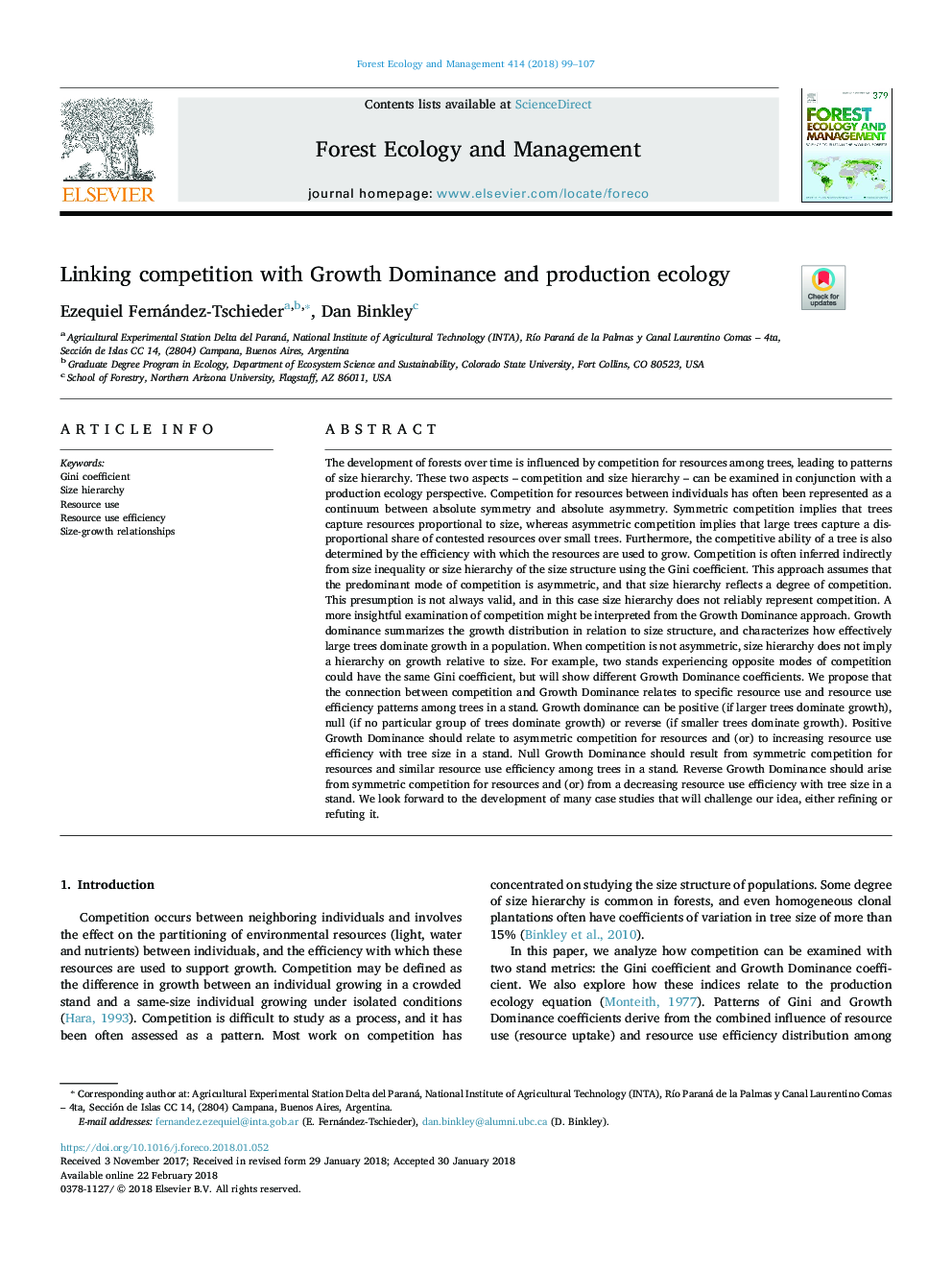| کد مقاله | کد نشریه | سال انتشار | مقاله انگلیسی | نسخه تمام متن |
|---|---|---|---|---|
| 6541780 | 1421344 | 2018 | 9 صفحه PDF | دانلود رایگان |
عنوان انگلیسی مقاله ISI
Linking competition with Growth Dominance and production ecology
دانلود مقاله + سفارش ترجمه
دانلود مقاله ISI انگلیسی
رایگان برای ایرانیان
کلمات کلیدی
موضوعات مرتبط
علوم زیستی و بیوفناوری
علوم کشاورزی و بیولوژیک
بوم شناسی، تکامل، رفتار و سامانه شناسی
پیش نمایش صفحه اول مقاله

چکیده انگلیسی
The development of forests over time is influenced by competition for resources among trees, leading to patterns of size hierarchy. These two aspects - competition and size hierarchy - can be examined in conjunction with a production ecology perspective. Competition for resources between individuals has often been represented as a continuum between absolute symmetry and absolute asymmetry. Symmetric competition implies that trees capture resources proportional to size, whereas asymmetric competition implies that large trees capture a disproportional share of contested resources over small trees. Furthermore, the competitive ability of a tree is also determined by the efficiency with which the resources are used to grow. Competition is often inferred indirectly from size inequality or size hierarchy of the size structure using the Gini coefficient. This approach assumes that the predominant mode of competition is asymmetric, and that size hierarchy reflects a degree of competition. This presumption is not always valid, and in this case size hierarchy does not reliably represent competition. A more insightful examination of competition might be interpreted from the Growth Dominance approach. Growth dominance summarizes the growth distribution in relation to size structure, and characterizes how effectively large trees dominate growth in a population. When competition is not asymmetric, size hierarchy does not imply a hierarchy on growth relative to size. For example, two stands experiencing opposite modes of competition could have the same Gini coefficient, but will show different Growth Dominance coefficients. We propose that the connection between competition and Growth Dominance relates to specific resource use and resource use efficiency patterns among trees in a stand. Growth dominance can be positive (if larger trees dominate growth), null (if no particular group of trees dominate growth) or reverse (if smaller trees dominate growth). Positive Growth Dominance should relate to asymmetric competition for resources and (or) to increasing resource use efficiency with tree size in a stand. Null Growth Dominance should result from symmetric competition for resources and similar resource use efficiency among trees in a stand. Reverse Growth Dominance should arise from symmetric competition for resources and (or) from a decreasing resource use efficiency with tree size in a stand. We look forward to the development of many case studies that will challenge our idea, either refining or refuting it.
ناشر
Database: Elsevier - ScienceDirect (ساینس دایرکت)
Journal: Forest Ecology and Management - Volume 414, 15 April 2018, Pages 99-107
Journal: Forest Ecology and Management - Volume 414, 15 April 2018, Pages 99-107
نویسندگان
Ezequiel Fernández-Tschieder, Dan Binkley,